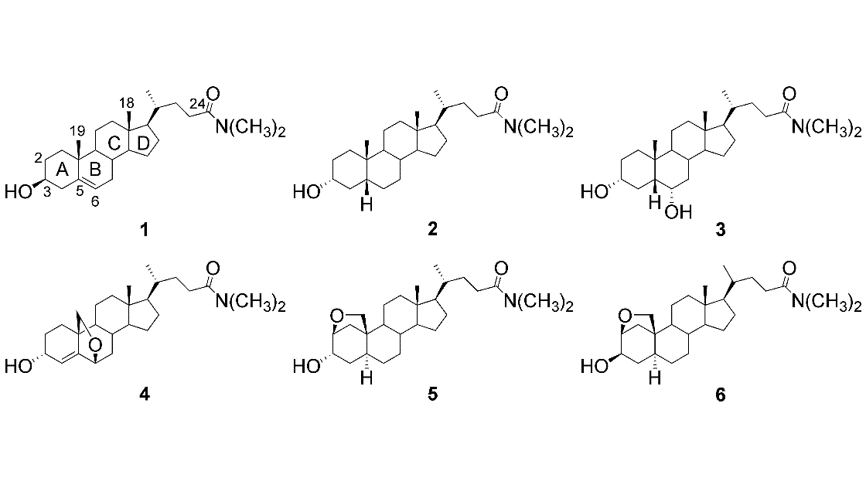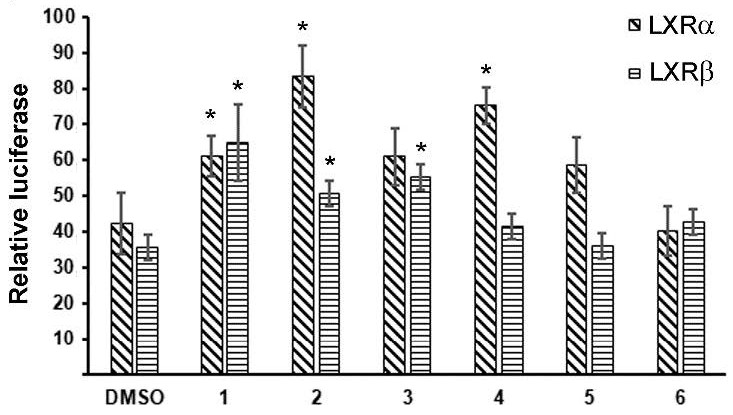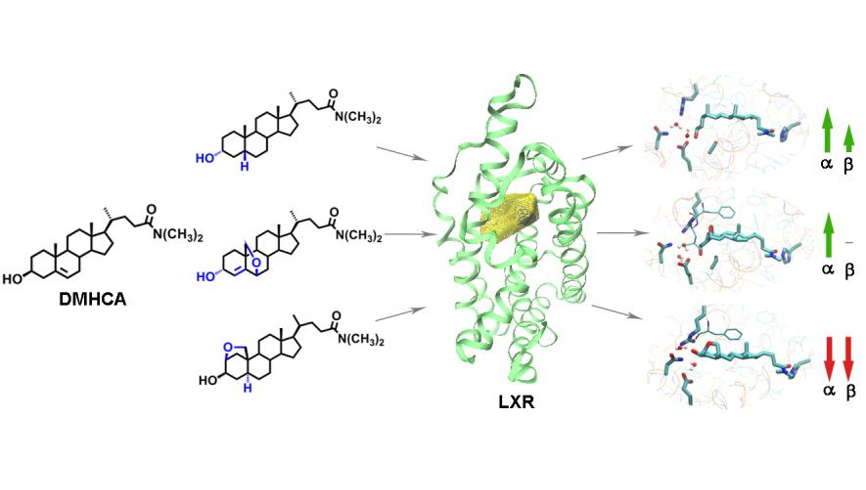Our work is focused on the development of novel steroidal nuclear receptor ligands. We use a multidisciplinary approach that involves the constant feedback between our three pillars of research: Organic Synthesis, Biological Chemistry, and Molecular Modelling.
Organic Synthesis

Biological Chemistry

Molecular Modelling

Currently our main research interests are in DAF-12, FXR, and LXR nuclear receptors. From an evolutionary point of view, oxysterol and bile acids nuclear receptors are among the oldest members of the ligand activated nuclear receptor superfamily with homologs that may be found even in the most primitive invertebrates. In the complex scheme of metabolic pathways in metazoan physiology, these nuclear receptors act as sensors and play a key role in the absorption and accumulation of nutrients and protection against toxic components of the diet. Our research project refers to the liver X receptors (LXR) that regulate sterol homeostasis, the farnesoid X receptor (FXR) that regulates bile acid homeostasis and the homolog DAF-12 present in nematodes that regulates the animal life cycle according to the environmental conditions. Besides being activated by oxidized metabolites of cholesterol, these receptors have in common a flexible ligand binding pocket that allows them to adapt to different kinds of ligands. Due to their central role in lipid homeostasis these receptors are related to diseases such as diabetes, atherosclerosis and other cardiovascular and neurodegenerative diseases. Starting from the structure of natural steroids and sterols, ligands of DAF-12, FXR and LXR, combined with specific structural characteristics of their ligand binding domains, in our research group we synthesize analogs with additional rings on the steroid nucleus, that confer specific orientations to hydrogen bond donors and acceptors and to lipophilic groups. In this way we seek to favor or block the interaction of these groups with specific residues in the ligand binding pocket. The ligand-receptor interactions and those of ligand-receptor complexes with coactivator and corepressor peptides are studied by a combination of experimental methods (circular dicroism, fluorescence) and in silico simulations using molecular dynamics.